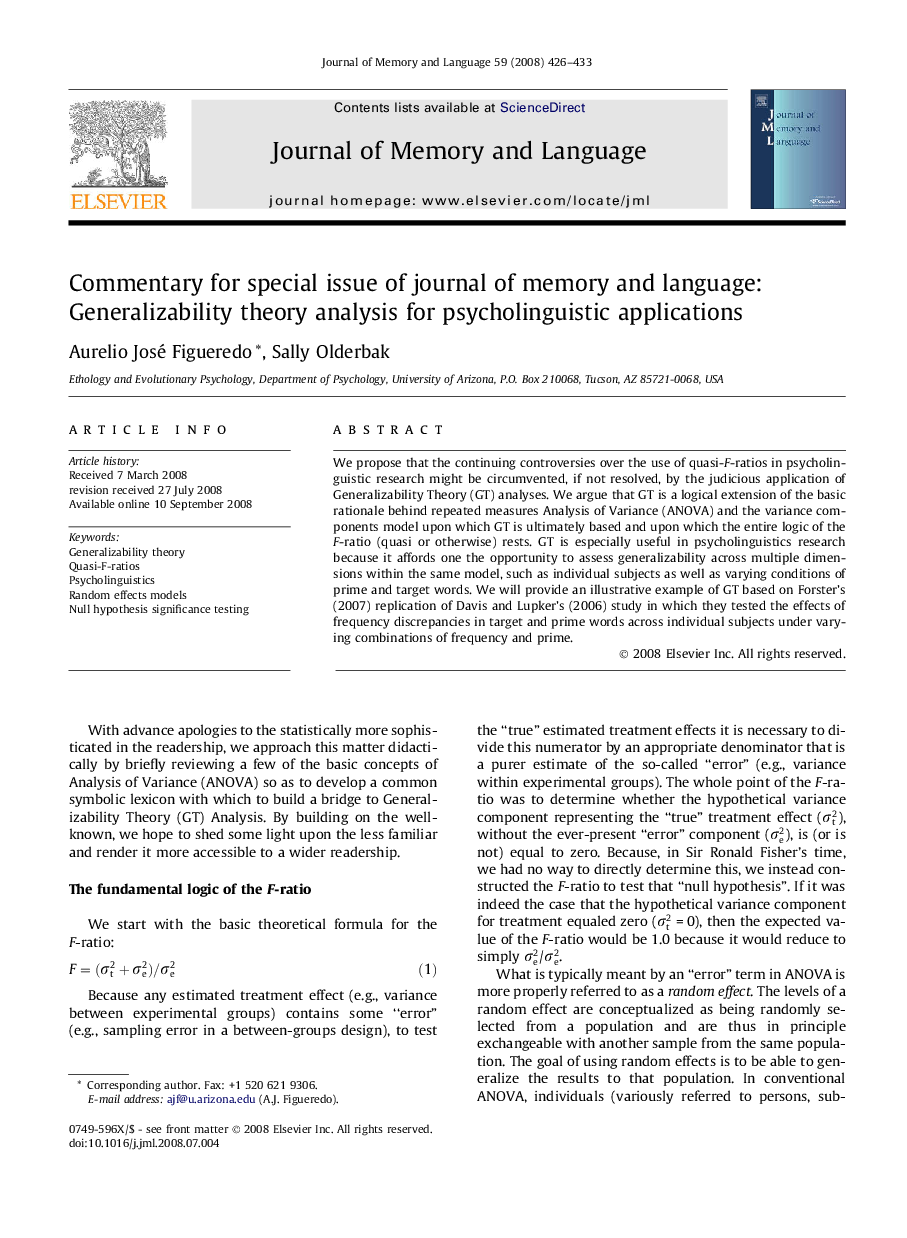| Article ID | Journal | Published Year | Pages | File Type |
|---|---|---|---|---|
| 932324 | Journal of Memory and Language | 2008 | 8 Pages |
We propose that the continuing controversies over the use of quasi-F-ratios in psycholinguistic research might be circumvented, if not resolved, by the judicious application of Generalizability Theory (GT) analyses. We argue that GT is a logical extension of the basic rationale behind repeated measures Analysis of Variance (ANOVA) and the variance components model upon which GT is ultimately based and upon which the entire logic of the F-ratio (quasi or otherwise) rests. GT is especially useful in psycholinguistics research because it affords one the opportunity to assess generalizability across multiple dimensions within the same model, such as individual subjects as well as varying conditions of prime and target words. We will provide an illustrative example of GT based on Forster’s (2007) replication of Davis and Lupker’s (2006) study in which they tested the effects of frequency discrepancies in target and prime words across individual subjects under varying combinations of frequency and prime.
